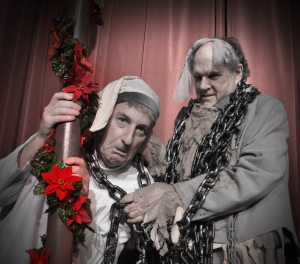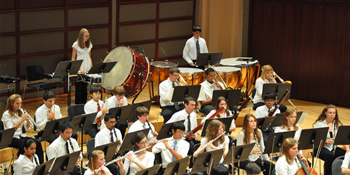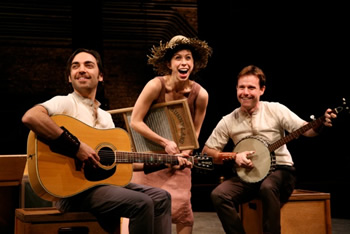When the Parker Quartet emerged onto Baldwin Auditorium‘s stage Saturday night as a part of Duke Performances and the Chamber Arts Series, to announce a program change, they made a gracious addendum: “We are so happy to be performing for you in this open, grand space. Thank you.”
The Baldwin stage is often filled with large orchestras like the Durham Symphony and Duke’s own orchestra, but the balanced acoustics of the hall highlighted the intimacy of the group’s diverse repertoire that included Beethoven, Thomas, and Dvořák; the latter featuring their renowned mentor Kim Kashkashian on viola.
Rather than beginning with Beethoven’s String Quartet No. 11, they started with Augusta Read Thomas’ Helix Spirals, a three-movement new work making its regional premiere. What a contrast this change was, for Helix began the evening with soft, walking pizzicato notes rather than a jolting Beethovenian chord. Violinist Daniel Chong had many admirable moments of leadership in the first two movements, guiding the group through this challenging piece to sound like one collective unit, rather than, well, four different instruments backing one another.
The final movement, “SPIRALS: life force,” displayed the power of the Parker Quartet’s unified sound with its aching chords that sounded reminiscent of Pärt. As the chords grew in rhythmic syncopation and dynamics, the group’s sound became one of unease leading to a climactic musical exclamation of joy that left the audience breathless.
Following the modern work was the equally dynamic Beethoven’s String Quartet No. 11 which solidified the Parker Quartet’s ability to perform a wide-range of repertoire. The group played the piece with epic, passionate arms, accentuating every motif and counterpoint Beethoven wrote. The quartet’s control made the result sound as if it were a new piece. Tutti bravi for that!
After a brief intermission, the group was welcomed back, this time as a quintet with mentor Kashkashian, performing Dvořák’s String Quintet No. 3.
Kashkashian, no doubt one of the top five violists in the country, has enough experience to perform an evening of solo works, but with gracious humility, she melded beautifully with her students in the work. Three out of the four movements of the work begin with the viola – Kashkashian taking the opening solo then handing the work’s remaining viola solos over to Jessica Bodner who, with her passion, rivaled Kashkashian’s playing at times.
Dvořák’s quintet is a combination of the rhapsodic musical style he uses in his symphonies with echoes of Beethoven. Imagine Dvořák with a sign above his writing desk, “Everything Old Can Be New Again,” which he makes clear in this quintet. This was particularly clear in the final movement, which begins with a Mozartian theme that soon combines the rapturous themes presented in the first movement. There are many tricky spots in this work – notably sudden tempo changes and musical tangents that, no doubt, can make or break the unity of the performing group. I am pleased to report that the Parker Quartet (Plus One) did not falter.
All eyes in the auditorium began on Kashkashian but soon trailed to the rest of the players, a sign that the students did not fall into their teacher’s shadow. Rather, her apprentices rose to the high level of playing of their master teacher, delivering Dvořák’s challenging piece in perfect, harmonious unity. For a “grand, open space” like Baldwin, Saturday’s performance was nonetheless an intimate diversion of five masters at work and proved that Kashkashian’s quality mentoring can resonate even after many years.













